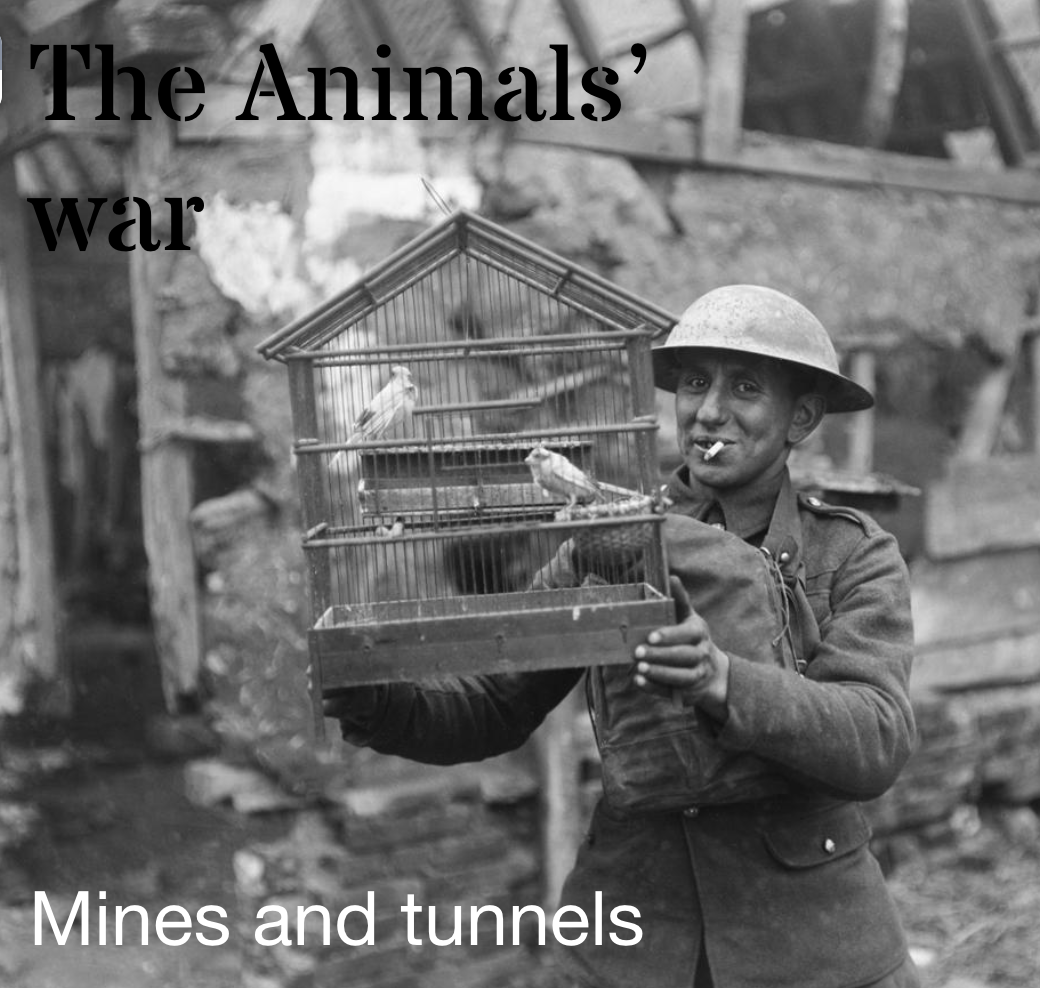10 June - 16 June
Section outline
-
Enter text here...
EXPLORE / TŪHURA learning intentions:
- We are EXPLORING the animals involved in the wars and their roles and effect on World War I
- We are EXPLORING historical narratives and perspectives by interpreting various kinds of sources such as primary documents, survivor movements, bystanders and collaborators.

Context of Lesson/Key Ideas:
The Centenary of the First World War is an ideal opportunity to look at the role of animals during this time.
This lesson looks at the work of the tunnellers and the role played by canaries in subterranean warfare.
Aims and Objectives:
• Understand that both sides dug tunnels so that they could explode mines beneath the enemy’s trench systems.
• Know that soldiers fought underground – attacking the enemy’s trenches and defending their own.
• Know that canaries and mice were used (and often died) in the tunnels to give warning of poisonous gas.
Learning tasks:
• Watch film clip from YouTube: ‘One of our mines is missing!’
• Field suggestions as to what happened and what the cause may have been.
• Get into teams of three or four. Provide each team with a set of sources (a - k) and Resource sheet 1 (Questions on sources). Ask them to study sources and to answer the questions on the sheet.
• Arrange evidence in a sequence (timeline) to tell the story of what happens.
• Refer PowerPoint 5: Mines and tunnels, to assist when giving the answers.
• Watch BBC report – Robert Hall interviewing military historian Simon Jones underground:
www.bbc.co.uk/news/world-europe-13734877
Homework/extension
• a) Produce a PowerPoint on the role of canaries in the WWI tunnels.
or b) Write a week’s worth of diary entries for a tunneller in WWI. Include canaries, mines,
gas, camouflet.
YouTube clip ‘One of our mines is missing!’ http://www.youtube.com/watch?v=VxG12ZYm3Q8
Sources:
a. WWI map of La Boisselle section of the Somme front*
b. Aerial photos of The Glory Hole near La Boisselle (1915)
c. Photo of Lochnagar crater near La Boisselle (1916)
d. Aerial photos of La Boisselle (2011)*
e. Map of trench system and The Glory Hole near La Boisselle *
f. Diagrams of i) Lochnagar tunnels profile ii) clay kicking and iii) shaft construction
g. Photo of tunnel digging
h Photo of French officer listening in tunnel
i Photo of soldier holding canary in cage
j. Accounts of Second Lieutenant George Eager, Second Army Mines Rescue School, 1916 and Lieutenant Geoffrey Cassels, 175th Tunnelling Coy, Royal Engineers (RE), 1916
k. Photo of Mine Rescue Station
Resource sheet 1: Questions on sources
Sources a - e:
1. What are the red and blue lines on the map of La Boisselle (Source a)?
2. Roughly how far apart were the front lines of the opposing armies?
3. What are the features marked by the black circles or star shapes on the map of La Boisselle (Source a)?
4. How were these features formed?
5. Why were they created?
6. Locate where the photo (b) was taken on map (e).
Sources f - g:
7. How were the mines laid or put in position?
8. If you have access to the internet, find out when work on the Lochnagar mine started and when it was detonated by studying the timeline at: www.laboisselleproject.com/timeline/
Source h:
9. What is this French officer doing and why?
Source i - k:
10. What is the animal in the cage (Source i)?
11. Can you find similar animals in cages in the illustration (f ii) and (f iii) and the photo (k)?
12. Why did the men who dug the tunnels take these animals underground?
13. What do you think happened to many of the animals used in the mines?
